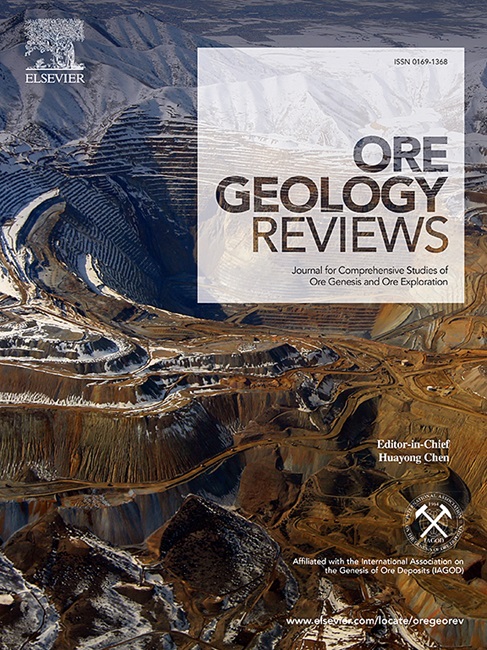Geophysical exploration of the giant Bayan Obo REE–Nb–Fe deposit in Inner Mongolia, China: Progress and challenges
IF 3.2
2区 地球科学
Q1 GEOLOGY
引用次数: 0
Abstract
The Bayan Obo giant rare earth element (REE)–niobium (Nb)–iron (Fe) deposit, located in Inner Mongolia, is recognized globally as a significant comprehensive deposit and serves as a crucial rare resource base in China. Despite nearly seven decades of mining operations, numerous scientific questions pertaining to the Bayan Obo deposit remain unanswered, underscoring an urgent necessity to assess the quantities of rare resources and to explore alternative sources of iron ore. Addressing these issues is intrinsically connected to geophysical exploration efforts. In the past decade, extensive geophysical investigations have been conducted in the Bayan Obo mining region, resulting in substantial evidence that enhances the understanding of the deposit’s characteristics. However, practical exploration has demonstrated that the complex nature of the exploration targets, coupled with the environmental conditions in the Bayan Obo mining area, poses significant challenges to various geophysical exploration initiatives. This paper primarily reviews the advancements and achievements in geophysical exploration within the Bayan Obo mining area over the past ten years, while also examining the key challenges faced during these exploration efforts. Finally, several critical directions for future geophysical exploration activities are proposed.

求助全文
约1分钟内获得全文
求助全文
来源期刊

Ore Geology Reviews
地学-地质学
CiteScore
6.50
自引率
27.30%
发文量
546
审稿时长
22.9 weeks
期刊介绍:
Ore Geology Reviews aims to familiarize all earth scientists with recent advances in a number of interconnected disciplines related to the study of, and search for, ore deposits. The reviews range from brief to longer contributions, but the journal preferentially publishes manuscripts that fill the niche between the commonly shorter journal articles and the comprehensive book coverages, and thus has a special appeal to many authors and readers.
 求助内容:
求助内容: 应助结果提醒方式:
应助结果提醒方式:


